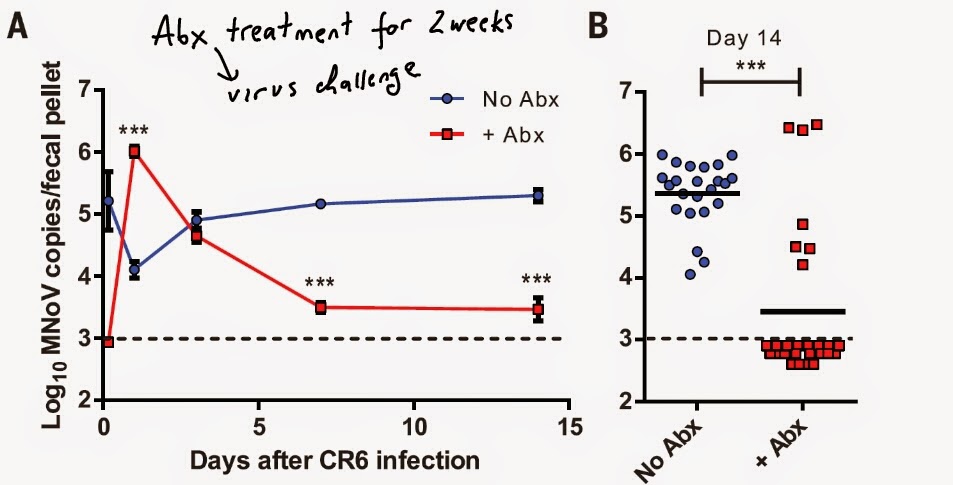Apoptosis is a fundamental biological process necessary for maintenance of normal cellular turnover. Initially, apoptosis, as a "voluntary" cell death was contrasted to necrosis, "involuntary" cell death. More recently, however, additional forms of cell death were described sharing characteristics of both of these processes (necroptosis, pyroptosis).
From an immunological point of view, cell death could be classified as a silent, non-immunogenic or a noisy, immunogenic. Interestingly, many anti-cancer therapy drugs were shown to induce apoptotic cell death that were immunogenic. Very recently, DNA detecting pathway involving IFN-beta (as an endogenous danger factor), cGAS, STING and IRF3 were shown to contribute to tumor cell detection by immune system following cancer cell apoptosis.
The two new studies in journal Cell provided additional results that may explain some long standing observations about apoptosis. I am going to review both of them separately.
First study was led by Prof Benjamin Kile at the Walter and Eliza Hall Institute of Medical Research, Australia, and Michael White (postdoctoral fellow at his lab) as a first author.
This group studied a role of apoptosis in physiology of haematopoiesis (not a typical immunology research) and it seems they accidentally came to the thought-provoking finding.
While working on apoptotic pathways involving BAX/BAK and caspase 9, the authors made an observation that in bone marrow chimera (BM) mice, caspase 9-KO donor haematopoietic stem cells yielded more lineage-negative stem cells compared to BAX/BAK DKO or wt donor cells.
Analysis indicated that IFN-beta was specifically up-regulated in caspase 9-KO BM chimera. The authors reasoned that there was a connection.
Indeed, BM chimera mice transplanted with caspase 9-KO BM cells on IFN-receptor alpha 1 deficient background abolished this effect.
To better understand the connection between caspase 9 and IFN-beta, the authors induced mouse splenocytes apoptosis in presence of caspase inhibitor. Unexpectedly, in presence of caspase inhibitor, cells secreted IFN-beta when exposed to pro-apoptotic stimulus.
Similar observation was made with human peripheral blood mononuclear cells (PBMC).
To analysis of sera from mice deficient in different molecules in apoptotic pathway showed that mice deficient of pro-apoptotic caspases (caspase 9, caspase 3/7) had high levels of serum IFN-beta.
The authors reasoned that in absence of active caspase 9 (or during its inhibition), an initial pro-apoptotic stimulus induce release of mitochondrial DNA (mtDNA) which is recognized by cytosolic DNA sensors, like STING, leading to IFN-beta production. Indeed, pro-apoptotic stimulus could not induce IFN-beta secretion in cells lacking mtDNA even in presence of caspase inhibitors.
In addition, experiments with STING-KO cells, or with CRISPR-Cas9 targeted cGAS -KO and IRF3-KO clones confirmed that no IFN-beta was produced in absence of STING pathway.
Finally, immunoprecipitation of cGAS followed by PCR amplification of co-precipitated DNA confirmed that mtDNA, but not genomic DNA, was enriched with cGAS in treatment group.
In summary, these results indicated that pro-apoptotic stimuli induce mtDNA release, probably as a bystander product of mitochondria membrane permeabilization, which can interact with STING pathway. However, normally, caspase 9 (and caspase 3 and 7) prevent mtDNA from being detected by STING pathway. It is not clear yet how is this accomplished.
This finding may provide new understanding of immunogenic versus non-immunogenic cell death and reconcile several prior observations relevant for cancer immunotherapy.
I would like to see the following experiments: use of physiological apoptotic stimuli, like FasL, TNF-alpha, TRAIL, granzyme B, rather than chemical molecules; Also in Fig 5I, pan-caspase inhibitor increased IFN-beta production even in caspase 9KO or caspase 3/7 DKO cells, implying that other caspases are maybe involved too.
David Usharauli
.png)






















































.png)